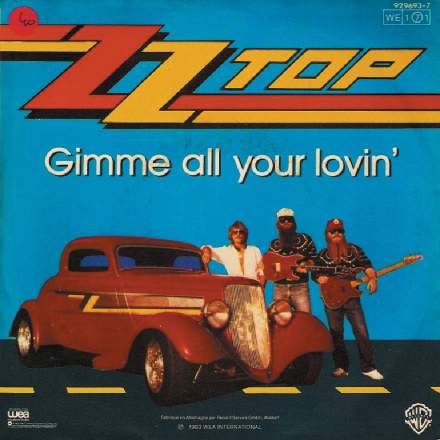
The ’80s was the heyday of the drum machine, with producers far and wide rejoicing in the ability to make drum parts tonally consistent, metronomic, and endlessly revisable. Rock bands who tried to take advantage of such new-fangled doobries, however, inevitably encountered problems in retaining any sense of live performance, on account of the lack of sophistication of early rhythm boxes. This production from ZZ Top’s mega-selling album Eliminator demonstrates some of the workarounds frequently employed.
The first issue was that synthetic cymbal sounds were absolutely dire, but digital memory was still so expensive that it simply wasn’t practical to sample a four-second cymbal hit in stereo. Hence cymbals, being less timing-critical than the kick and snare, were routinely overdubbed, and it certainly sounds that way in this instance. Likewise, any part that required more than the very limited musicality displayed in the triplet snare fill at 1:31 simply had to be played in by hand — most obviously the slightly dislocated-sounding tom fill at 2:59. I also suspect that the hi-hat was overdubbed for this reason (most noticeably during the introduction), and is that an overdubbed ride during the solo at 1:34-2:22 too? The other main problem with first-generation machine drums was a difficulty in injecting any humanity or groove — while the basic beat during the first verse and chorus has that kind of unstoppable juggernaut momentum that all metronomic patterns do, the fear was that they’d start plodding if left that way throughout. Hence that old standby, the tambourine, sashays in at 0:57, and it’s ‘Hello there stereo shakers! Back so soon?’ at 3:01.
So what relevance does all that have nowadays? Well, you’d have thought that all the latest technology might render these kinds of workarounds obsolete, but in my opinion they’re pretty much as useful as they ever were, simply because so few people seem to be able to get a musical-sounding result out of sample sets or virtual drum kit instruments within any reasonable time-frame. Sure, many bits of software are now capable of extremely musical end results, but I only ever hear them living up to their promise in project studios on those rare occasions when they’re driven by someone who understands their inner workings and has the technical skills to program them sensitively.
So whenever you hear a second-rate programmed drum kit, I trust you’ll think of Eliminator. Hang on, that didn’t come out quite right…










